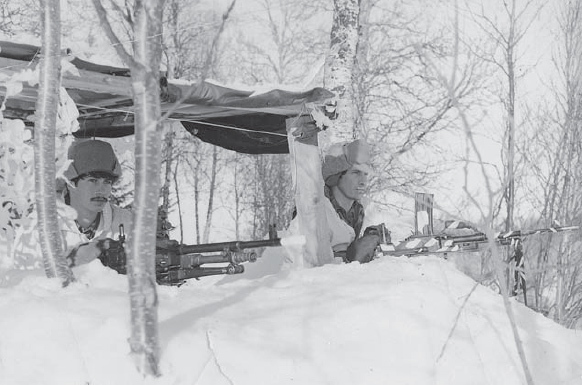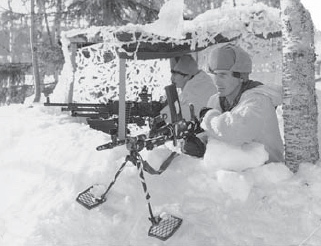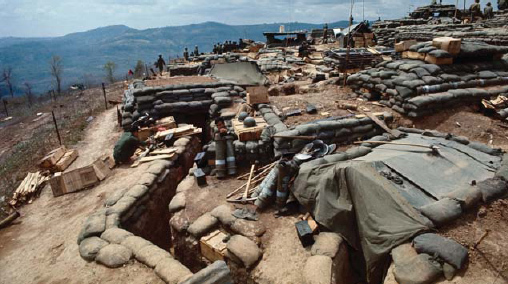When might you need to make a shelter?
You might think that the only time a soldier needs to worry about shelter is when something has gone seriously wrong – like you are on the run in enemy territory. Actually, if that is your situation you are very unlikely to have time to make a shelter unless you are having to lie up while an injury heals.
In the normal course of events while on operations you will be issued with equipment suitable for the climate. There will be buildings or portacabins of a suitable type for when you are in your base camp and your kit for patrolling will include clothing and sleeping bags of a suitable grade for the climate. Of course they will... So when do you need to make a shelter?
I have said before, and I will say again, being a good soldier is not about roughing it. The idea is to make yourself at home wherever you find yourself. So, if you are dug in to a defensive position on a hill, in a forest or maybe even just waiting for a few weeks in the back of beyond for the generals to make up their minds what to do with you then you might as well be comfortable. Being comfortable means being out of the sun, cold, rain, snow or wind. And, of course, the tents will have gone missing. Depending on the situation, your shelter from the weather may also have to double as a shelter from artillery and gunfire but I have covered that in another section so just take this into consideration if it applies.
Degrees of shelter
But when there is rain, snow or cold wind you need to start thinking. The first thing to realize is that wind not only carries away your body heat and makes you feel colder but it also drives rain and snow into your clothing. This is a bad thing so you must first of all protect yourself from the wind.
The quickest and easiest way to do this, at a night stop in bad weather or to avoid putting up a tent, is to lay out your old friend the poncho with your sleeping bag along one side. Get in the bag and then roll up the poncho around you. Given you don’t sleep where ground water runs into the envelope you will stay snug and dry in the worst weather. This is all very fine for a quick sleep but if you are stuck in one place for a while you don’t want to spend all your time in a sleeping bag. You want to cook, eat, smoke and so on. This means a more elaborate shelter.


GPMG and Bren Gun positions, 200 miles north of the Arctic Circle. Note the contructed shelter. (Photo courtesy Colour Sergeant Trevor ‘Sadie’ Sadler, 1st Battalion ‘The Vikings’ Royal Anglian Regiment)
Local materials
A poncho and/or some plastic sheeting weighs nothing and should always be in your kit when there is a chance of staying out anywhere. Failing this, or when you need something more substantial for a larger refuge, take a look around for suitable materials. If you are in an area which is or was built-up then there may be corrugated iron. This is easy to work with to make a wind break or roof and when placed on strong timbers can support a lot of protective earth.
Failing heaven-sent corrugated iron you are down to making a wooden frame and covering it with plastic or even thatching. Thatching with grass or other shrubbery is rarely rainproof but your first thought should be to stop the wind; then the rain from above. Even slowing the rain to a steady drip is much more comfortable than driving rain as it is the wind which will do you down.
Heating
So you realize now that all accommodation should have its back to the wind, so to speak. Generally this means a sort of lean-to with the open side to the lee of the wind. It is possible, if the tactical situation allows for a fire, to heat this quite efficiently. Site your fire in front of the opening on the lee side of your shelter and perhaps 4 or 5ft away. Drive in stakes to make an arc on the far side of the fire and then lace these with thinner shoots or whatever offers to make a curved wall behind the fire from where you are sitting. Surprisingly, this sort of screen reflects the heat from the fire quite nicely into the opening of your shelter. Being close by, it also means you can sit and watch your food cooking while you are out of the rain.

ARVN’s (Army of the Republic of South Vietnam) shown digging bunkers and piling sandbags around their fire support base Delta One about 9 miles inside Laos in 1971. Nice position, nice trenches, nice shelters, good effort. (Corbis)
The dangers of smoking in the field
Soldiers smoke to deal with the tension and boredom of the endless waiting. There is an argument that says if you may well be shot soon you might as well risk cancer from a smoke.
But, remember, a good tracker can follow a smoker by the smell – even when he is not smoking. Certainly he can lead a team in to a camp where there are smokers from down-wind. This may or may not be a problem depending where you are and the soldiering skills of the enemy.
What is always a problem is the light given off by the cigarette whenever it is lit and glowing, but especially when the smoker takes a ‘drag’ or actually strikes the match. When I was a 16-year-old junior soldier we were taken out onto some cold, dark, windy moor in the north of England to watch someone light a cigarette at night away from local sources of light.
It was quite amazing how much light came from the lighting of the cigarette, particularly, and how the glow from the cigarette lit up the smoker’s face as he enjoyed his smoke. By adjusting our distance from the target we worked out we could see the smoker light up from some hundreds of yards away! I have always remembered this and send my thanks to the instructor if he reads this.
In the British Army there used to be a tradition that the ‘third light’ for a cigarette from one match was unlucky. This dates from the Anglo-Boer War (1899–1902) when crack Boer snipers would see his target with the first light, set his sights with the second and make his kill with the third.